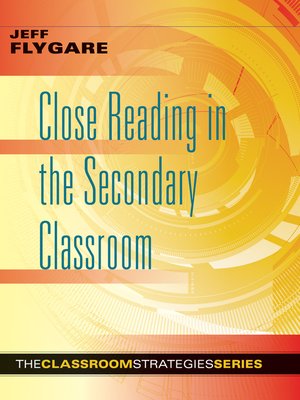Close Reading in the Secondary Classroom
ebook ∣ (Improve Literacy, Reading Comprehension, and Critical-Thinking Skills) · The Classroom Strategies Series
By Jeff Flygare

Sign up to save your library
With an OverDrive account, you can save your favorite libraries for at-a-glance information about availability. Find out more about OverDrive accounts.
Find this title in Libby, the library reading app by OverDrive.



Search for a digital library with this title
Title found at these libraries:
| Library Name | Distance |
|---|---|
| Loading... |
Close-reading strategies help students develop the literacy and critical-thinking skills essential for the rest of their lives. Close Reading in the Secondary Classroom offers high school and middle school educators extensive guidance on how to introduce close-reading strategies to students and help them improve their reading comprehension skills and critical thinking. Learn how to select close-reading examples and passages, elicit deeper question formation, facilitate positive classroom discussion, and assess your students' reading comprehension skills and literacy progress.
Use research-based close-reading instruction strategies to increase student literacy and critical-thinking skills:
Contents:
Introduction
Chapter 1: Research and Theory
Chapter 2: Prereading
Chapter 3: Reading Twice and Annotating
Chapter 4: Generating Questions and Reading Analytically
Chapter 5: Discussing as a Class or Analyzing Individually, and Using Processing Activities
Chapter 6: Planning and Assessing Close Reading
Epilogue
Appendix A: Answers to Comprehension Questions
Appendix B: Extended Examples of Close Reading







